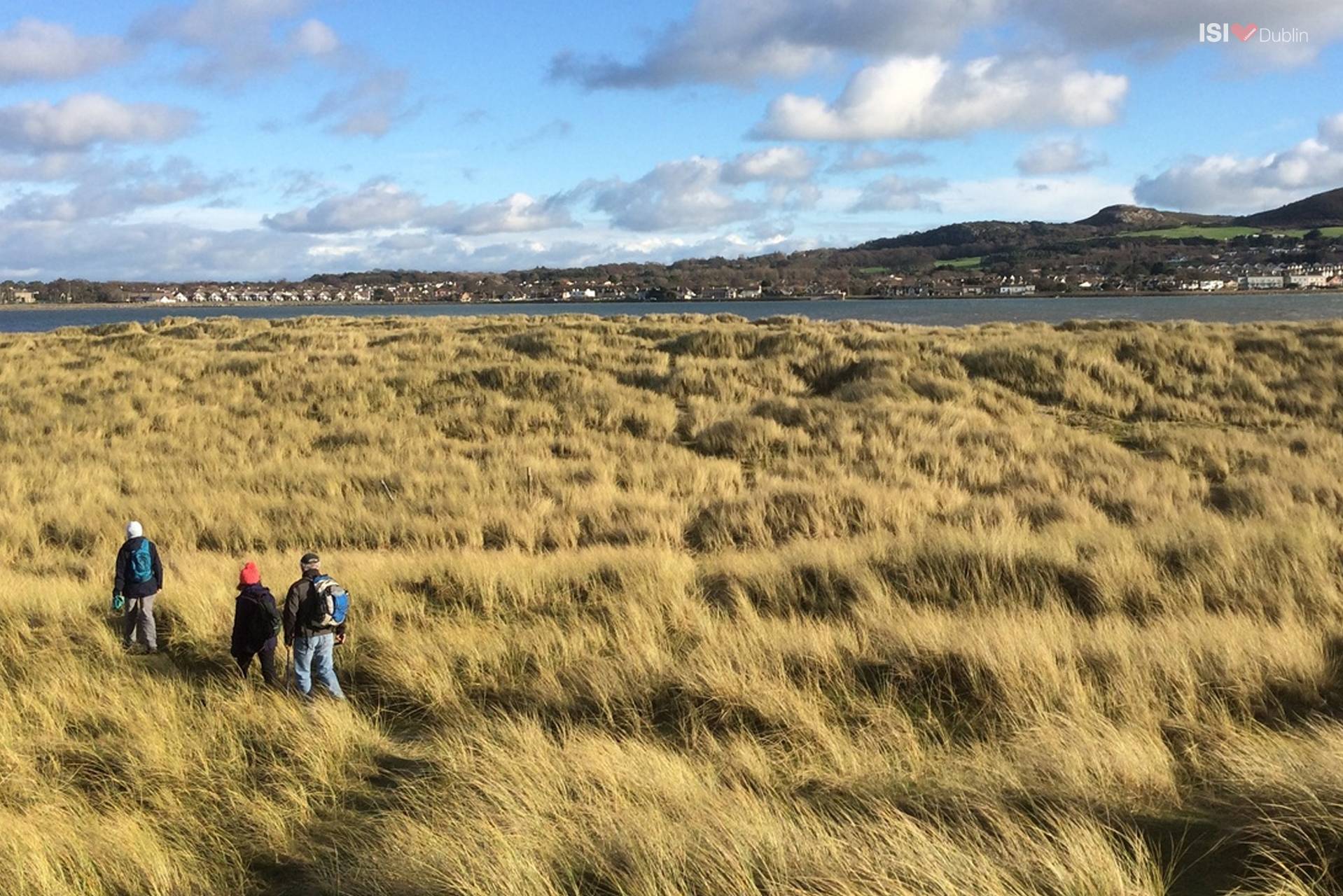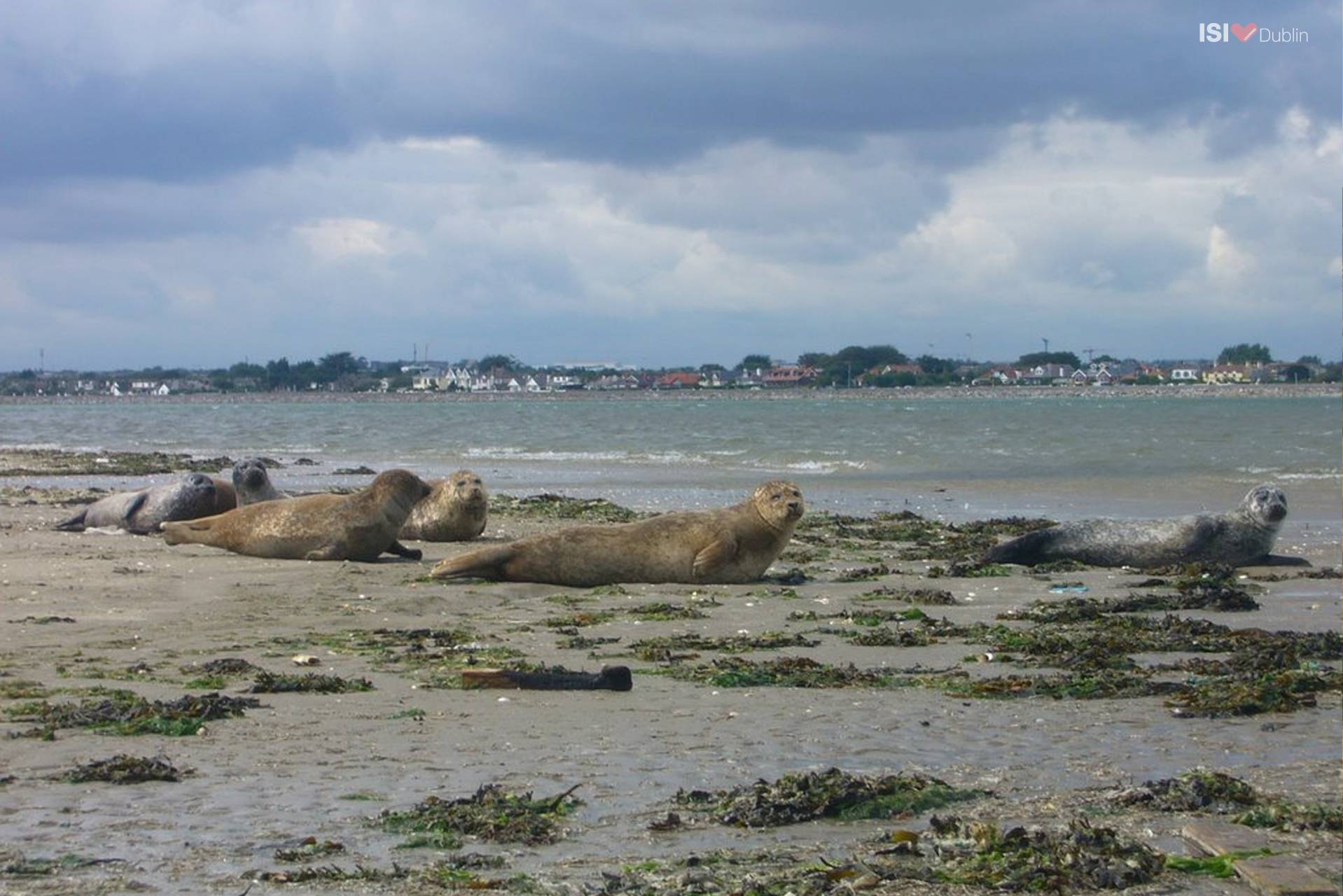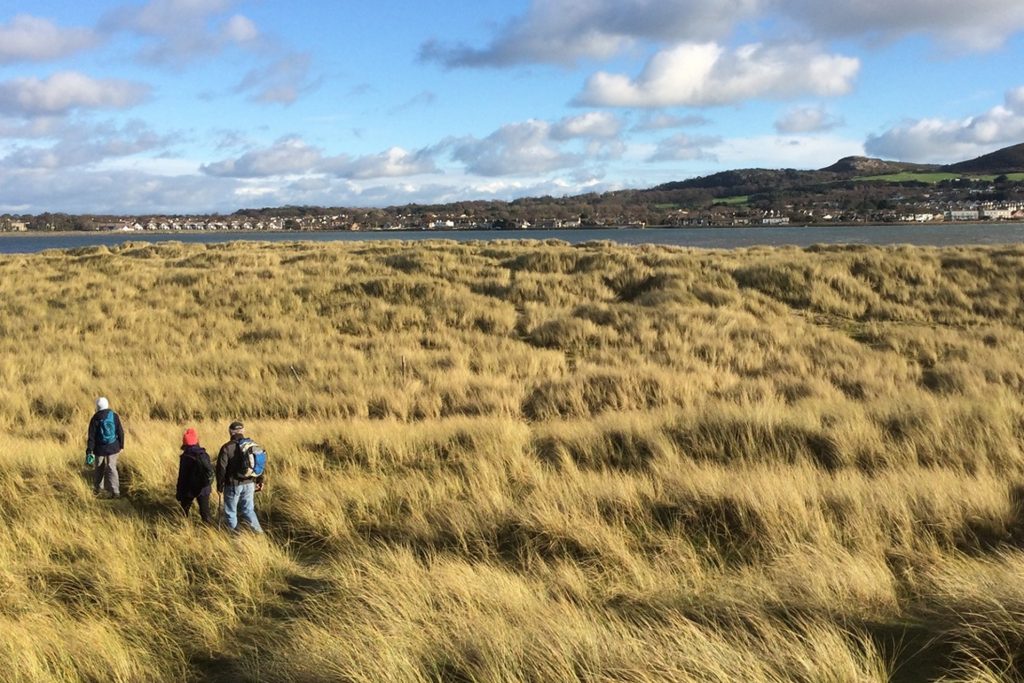ISI students who wish to take a break from studying English in Dublin this summer ought to consider checking out Bull Island!

Brief History of Bull Island
Bull Island (or North Bull Island, to give its full title) was first formed as a consequence of human intervention designed to deal with Dublin Bay’s silting problem. This necessitated the building of first a South Wall, followed by the erection of the North Bull Wall in the last years of the 18th century. Sand collected and an island began to form, leading to the first bridge being built in 1819. The island continued to grow throughout the century, as did the volume of visitors and day-trippers coming to it, drawn by the steady emergence of a beach area.
Today the island contains numerous large golf courses – the first was set up in 1889, and the golfing tradition continues to this day. There is a statue of the Virgin Mary, as well as a green lighthouse – it is the north side’s equivalent of the south side’s red lighthouse, nicknamed the ‘Poolbeg Flasher’. Bull Island also has an Interpretative centre, which plays host to regular visits from schools and educational projects.
Wildlife of Bull Island
Bull Island is a car-free zone, and as such is a haven for wildlife. It functions as a bird sanctuary, and has a wide range of winter visitors, with a smaller number of species nesting there on a year-round basis. Bird species include oystercatchers, curlews, redshanks, brent geese, plovers, egrets and terns. As a nature reserve, Bull Island also plays host to a rich variety of mammal and even reptile species. Some examples of the latter include frogs and a small number of common lizards. Mammal species include foxes, rats, shrews, rabbits and Irish hare – though the latter have recently become extinct.

As with much of Dublin’s coastline, common seals and grey seals are a regular sight. The island is a breeding ground for them, as well as porpoises. Seals are often to be seen basking on the sand of the beach, much like human sunbathers.
Dollymount Strand of Bull Island
The beach itself is called Dollymount Strand and spans the full length of the island. It is especially popular with families on weekends, and is a great place for walking, picnicking or swimming. And though technically Bull Island is meant to be a car-free zone, in years past many people got their first driving lessons from their relatives on Dollymount Strand! The island contains many great views of the sea, dotted by landmarks such as Howth Head, Sutton, the red-and-white-striped Sandymount towers and the rest of Dublin’s southern coastline.
So there you have it, ISI students – this summer when you’re looking to take a break from studying English in Dublin, you could no better than take a day-trip to Bull Island! It’s a fabulous beauty spot and one of Dublin’s true gems. Enjoy!

